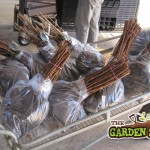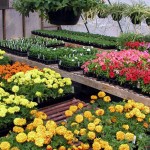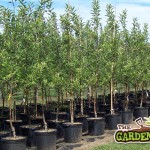50% of a good garden is good plants and good plant choices. Therefore it is crucial that thought and planning goes into all visits to garden centres so that you come out of there with the right garden plants for your garden
When selecting plant there are a number of things you should do. Just the process of choosing one plant from a bunch is important. Be sure to view a number of plants and choose the one that has the best overall shape, number of stems, and health
- BareRoot Stock
- Herbaceous Plants
- Potted Trees
With regards to the size and age of garden plants that you should go for, you should consider the following:
When buying woody plants it is recommended that you buy them medium to large in size as these plant can be slow to grow and by buying larger plants if saves you years to waiting for the plants and your garden to develop
When buying herbaceous plants it is recommended that you buy them small. This is because all herbaceous plants are fast growers and will quickly fill out in one or two seasons
The next thing to consider is the actual quantities of plants to buy. Of course this will depend on your garden design and on the size of your garden. But it would be recommended that, when buying herbaceous plants you should choose only a small number of different type or species of plant but by large amounts of each.
For example in a small to medium sized planting scheme you should only have around 5 or 7 different plant species but you may have up to 100 plants. With this you will create a simplified but visually clear planting scheme that is pleasing on the eye and easy to understand.
Another tip is always to buy and plant garden plants in odd numbers. This will make your planting scheme appear more natural. Only if you are designing a formal planting scheme should you plant in even numbers.
When choosing and buying and then planting garden plants you should first start with the larger and specimen plants and then work your way down to the medium and structural plants and then down to the herbaceous and filler plants. By doing so it is easy to determine the quantities and characteristics you need for the smaller plants
When choosing garden plants with would be suggested that you don’t try and plant too many plants that you are unfamiliar with. Your planting scheme will work best when you work with the plants you know, keep the number of different plants to a minimum and only add 2 of 3 new plants that you are less familiar with.
Designing a planting scheme can be a very difficult exercise and so you should try and make life as simple as possible to ensure a coherent design. With every scheme and new bed you plant you will learn something you that you can bring with you to the next planting exercise


